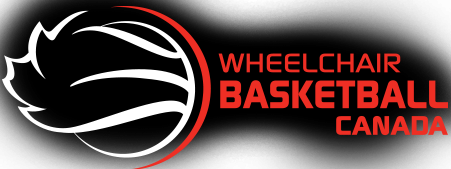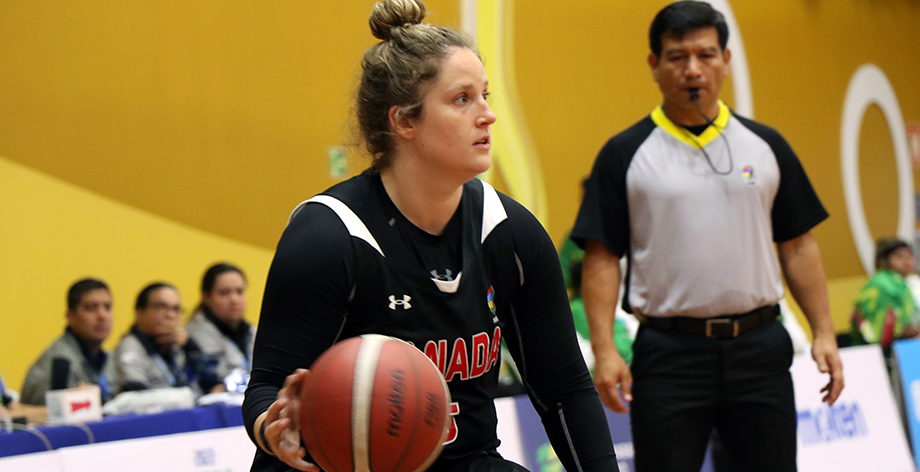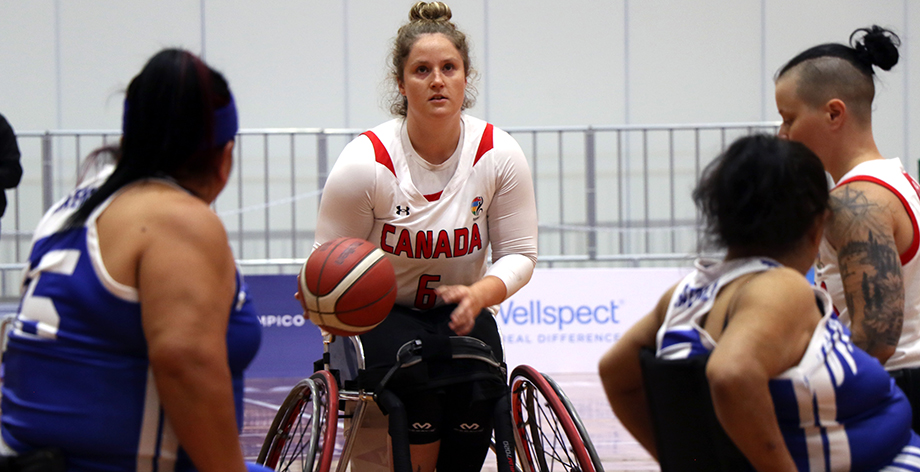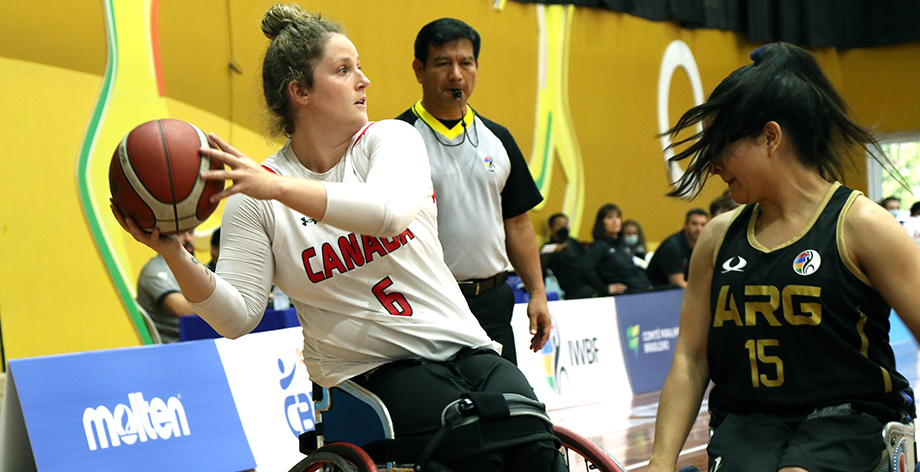Arinn writes about growing up on the farm in Legal, her passion for sports and how she found wheelchair basketball in this month’s Athlete Spotlight presented by Toyota.
I grew up in Legal, Alberta. It’s a tiny town; there is one road to come in and one to leave. I grew up on a farm in Legal but went to school in Morinville. I was a farm kid—we’re rough and tough. I played various sports growing up. I take pride in being a farm kid because I was always just aggressive with anything I did—I was really strong. It was a simple life.
I had horses growing up, so I had to take care of all my horses. We also had a strawberry you pick, so you’re either picking weeds or picking strawberries. In my free time, we were running across the hay bales or playing with the horses or on some quad or ATV— always running around.
I have one older brother, Jackson, he’s a year older than me. Jackson was a typical older brother: pick on your little sister. I think he really drove my competitive side. I wanted to be better than him in sports or racing him to the barn; I wanted to beat him. I think we have a pretty good sibling relationship. Now that we’ve both gotten older, there is good mutual respect there. He really loves watching our games, cheers us on and gets into it, so I really appreciate it.
Introduction to sports
I was practically born into basketball—my dad used to play able-bodied basketball and football. So, I was pretty much thrown into it when I was like 5-years-old. I’ve been playing and loving it ever since. My dad coached me for a long time. He was a rough and tough guy, and he made me a rough and tough girl in how I play.
I started playing lacrosse a little later; I just wanted to try something new, and I could play it with a bunch of my cousins. Lacrosse is really what fueled my aggression. Lacrosse is more physical, and I could do practically whatever I wanted. It was the best. I wasn’t particularly good at the sport, but if you went after any of my cousins, I was the one you had to answer to, so that was a ton of fun.
I was also an equestrian rider for more than 10 years. I got to represent Alberta. I was in dressage, show jumping, cross country jumping—I did it all. I was decent at it, but I had to leave the riding behind once I got hurt.
The injury
My original knee injury happened while I was playing lacrosse. I was in the middle of a game against a top team, and we were losing badly—I received a pass and was running up the boards when another player hit me from behind, I kind of got superman-ed while I was in the air, falling, another girl hit me from the side. My knee wrapped around her, and I tore my ACL and my meniscus.
Unfortunately, the doctors thought I had just sprained my knee for the longest time. I would start to get back into sport, and I would re-blow out my knee. I probably blew out my knee about 12 times before doctors were like, ‘Oh, there’s something wrong, it’s not just a sprain.’
As a result, I was in and out of sport for about a year. Once the doctors realized that I had really damaged my knee. I had surgery and then rehabbed that, I was out for quite a long time because I didn’t react well to the surgery.
Introduction to wheelchair basketball
While I was sidelined with the knee injury, our family friend introduced me to wheelchair basketball, and that’s when I started my transition into the sport. Once my knee surgery was successful, I devoted my time to basketball and wheelchair basketball. I thought I could still potentially have an able-bodied basketball career, so I started focusing on that and getting a scholarship.
In Grade 11, in my last standup basketball game, it was the semifinals with the winner going to the national championship game, I went to intercept a pass mid-air, and I didn’t want to land on my right knee anymore, so I landed on my left knee, and that’s when I blew out my knee and broke some of the bones in my left leg.
I was literally laying on the ground, I wasn’t crying, I was obviously in a ton of pain, and my coach came running over and was like, ‘Can you still play? We need you, there’s like 15 minutes left, we need you.’ I was on the ground, laying on my stomach, had my chin in my hands, and I looked at him and I was like, ‘I’m going to play for Team Canada.’ He was like, ‘Excuse me?’ And I was like, ‘I’m going to go play for Team Canada.’
He was like, ‘I don’t understand,’ and I was like, ‘I’m going to go play wheelchair basketball for Team Canada.’ Since then, all my focus went to wheelchair basketball and then I eventually made the team.
Transitioning to wheelchair basketball
The transition to wheelchair basketball wasn’t that difficult. I just had to get used to the chair. The Alberta program is so good with new athletes and recruiting new athletes. At the time, there were a ton of legends with the Alberta program, so it was really easy to stay motivated and keep trying because they were always there helping me.
At my first wheelchair basketball practice, I hit a girl really hard with my chair and stole the ball from her. At the time, this was the first time I’d ever seen so many disabled athletes in a room, I apologized to her and gave the ball back. She gave me the dirtiest look, and then the next play down the court, hit me as hard as she could, and she was like, ‘You don’t apologize in this sport.’ In that moment, I was like, ‘And that is why I’m playing.’ I just instantly fell in love with the game.
Attending university in Alabama
I was initially in Alberta, then after we won the World Championship in 2014, I lived in Toronto for a year at the academy, decided to go to Alabama for five years, and then moved to Germany to play professionally.
I got a full-ride scholarship to attend Bama and studied exercise science.
There are so many legends in the Alberta program that all followed a similar path: they went to school in the States and then played professionally overseas for a couple of years. At the time, the girls that had done that were the best 4.5 athletes in the world. So, I was like, ‘I want to do that, I want to be the best.’
Once I was good enough and interested enough to go to the States potentially, Alabama picked me up quickly. I went into kinesiology since it’s something I love. School ended up being good for me.
Playing professionally in Germany
I always wanted to play overseas, and Germany has always been one of the better programs. I was always interested in Germany. I got my foot in the door going to play in international tournaments, so people started to know who I was.
Then I just put my name on a European website saying, ‘Hey, I’m an interested 4.5’—you have to hype yourself up in a paragraph. As soon as I put that out there, I had quite a few teams email me, and then I could decide.
It was an easy decision with the Rhinos because they were in the middle of the pack, so I knew if I went there, I could help improve the team’s standing, and I just knew how I play basketball would benefit me and benefit the Rhinos as well. The town we live in is Wiesbaden, and we’re called the Rhine River Rhinos because the Rhine River runs through Wiesbaden.
You have to speak a little German to get your bearings, but I’m really fortunate that my teammates are all fluent in English, so when we’re on the court, that’s how we communicate. Also, Wiesbaden is a really great city, and it’s only about 20 minutes away from Frankfurt—so its right next to a big hub, and travelling is really easy from Frankfurt.
We travel a ton. You can travel anywhere for almost under 100 Euros which is so crazy. I’ve visited a lot of cities because of basketball, but I really liked Poland. There’s a lot of history there, and the food and the people were just awesome when I went. I also really like Belgium; I enjoyed it there.
Advice for new athletes
I would say to go for it and to be all-in. You’re going to be super uncomfortable at the start, and you’re learning a ton of different qualities, so buy in and have fun doing it.





